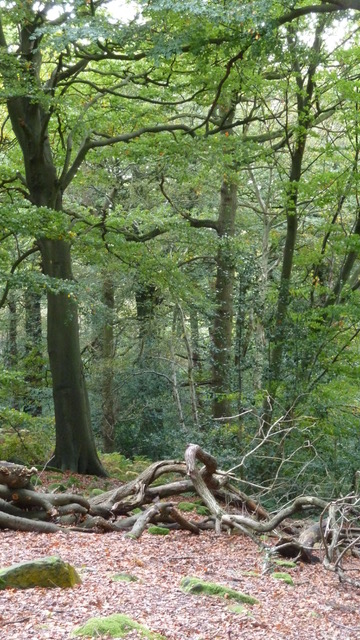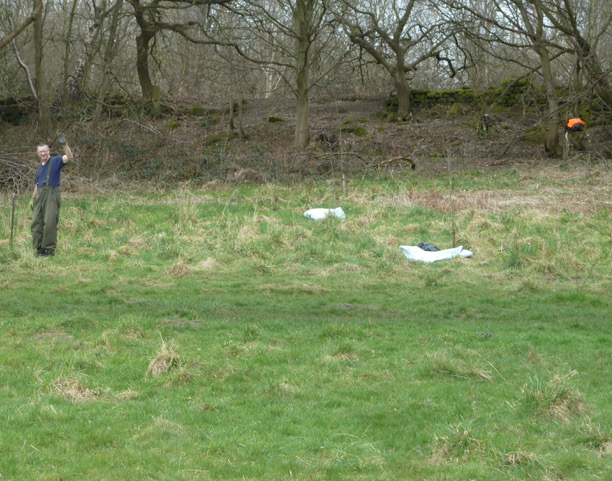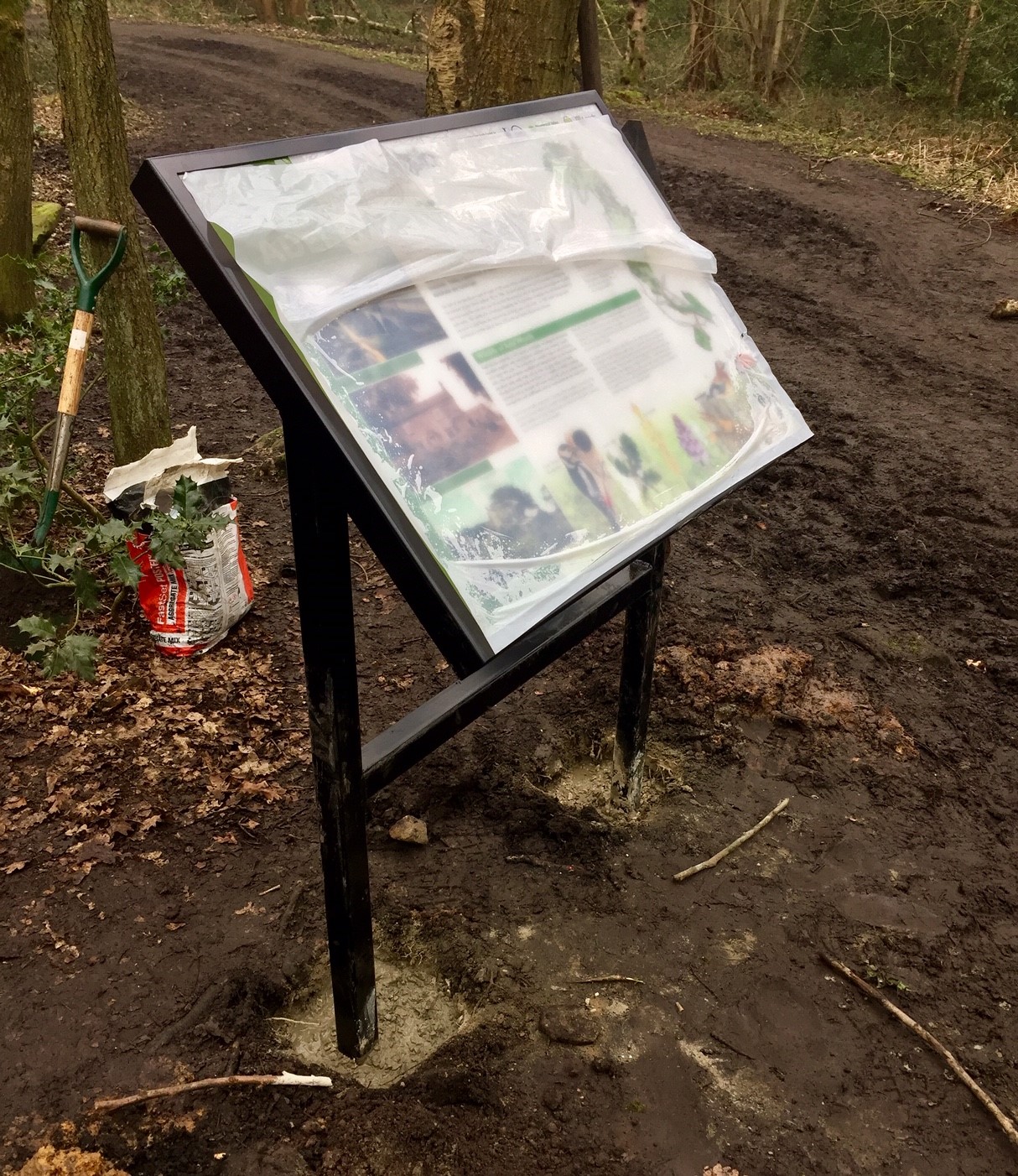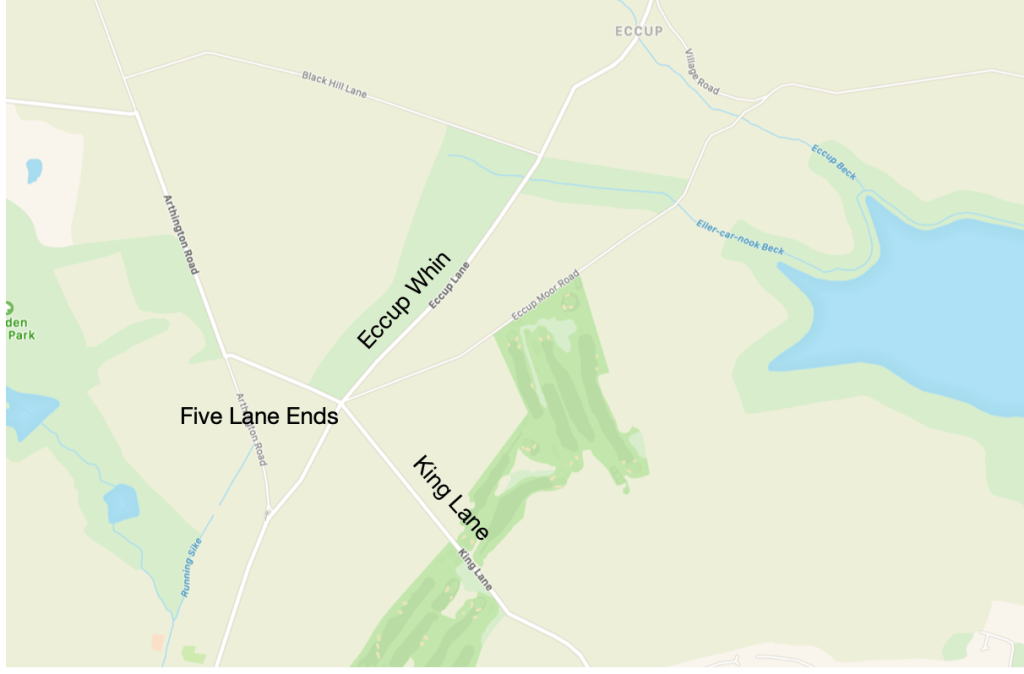
Steve Joul spent today planting ten sapling fruit trees in the disused rugby field to the north of Crag Lane. If you can’t see them very clearly in the photograph, it is because they are only about a metre and a half in height and they are planted well apart so that they have space to develop fully.

The fruit trees are as follows:
- two Cox’s Orange Pippin apple trees
- four James Grieve apple trees
- one Belle Boskoop apple tree
- one Egremont Russet apple tree
- two Conference pear trees.
They are grafted onto M25 root stock which means that they needed to be planted eight metres apart as, with tender loving care, they have the potential to grow into magnificent trees. The tender loving care will involve ensuring that they get adequate water during the Summer until their root systems have recovered from being uprooted and replanted.
The planting of the trees is part of Leeds City Council’s Woodland Creation Scheme. In 2019 the Council declared a climate emergency and set a target to become carbon neutral by 2030, part of which is to be achieved by the planting of trees.
The Council is also a member of the White Rose Forest, a community forest for North and West Yorkshire. The White Forest strategy for Leeds has set a target of increasing tree cover from 17% to 33% by 2050 and is intended to ensure that no household in Leeds is further than 500 metres from wooded spaces.
These ambitious plans involve planting 5.8 million trees on Leeds City Council land by 2045. Each year from 2020 to 2045, fifty hectares of parks and green spaces will be identified and planted up with 4,500 saplings per hectare, a planting target of 225,000 trees each year, to create an additional 1,250 hectares of new woodland per year throughout the city on Council owned land.

The benefits of planting trees are many:
The planting of fruit trees in Adel Woods was at the request of one of our local councillors. Here is a little more information about each of the tree species – obtained from https://www.orangepippintrees.co.uk (save for Belle de Boskoop) :
Cox’s Orange Pippins
Considered by many to be the finest of all apples, primarily a variety for eating fresh, but also excellent for juice, cider and baking.
James Grieve
Raised in Scotland at the end of the 19th century, this is a mid-season variety which is picked in early-mid September. It is a very juicy apple grown for eating and cooking. It is an excellent pollinator for many other apple varieties.
Belle de Boskoop (information from Wikipedia)
This is an apple cultivar which originated in Boskoop, Netherlands, where it began as a chance seedling in 1856. It is firm, tart and fragrant and can contain more than four times the vitamin C of Granny Smiths or Golden Delicious.
Egremont Russet
A classic English russet apple from the Victorian era, popular with discerning apple lovers who appreciate its unique flavour and appearance. It works well in savoury salads and is good for juicing.
Conference Pear
The most widely-grown pear variety in the UK. It crops heavily and reliably and has an excellent flavour.
If your mouth is now watering, have a look at the orange pippin trees website.











